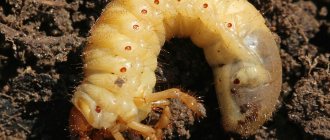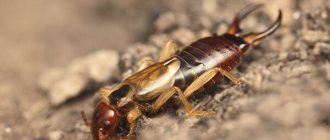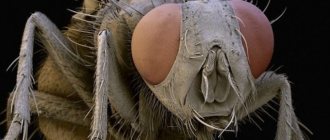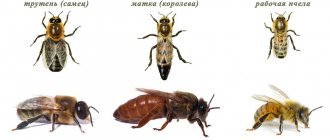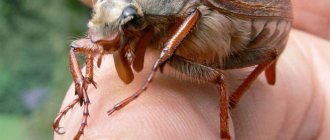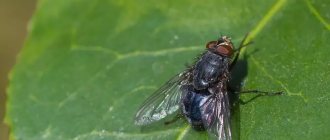Bronze beetle: appearance
Golden bronze or common bronze, photo
The appearance of the golden bronze can vary significantly depending on the subspecies. Moreover, all insects have clear common features. In addition, they have a similar degree of distribution and the same lifestyle.
General external features
The golden bronze can reach 2.3 cm in length. But in general, the size can vary depending on the subspecies and the comfort of living conditions. The body of the insect is oval and wide, slightly oblong. Most often, the front part of the body is narrowed. The antennae are short and club-shaped. The coloring is extremely varied. The most common beetles are green in color. All golden bronzes have the following features:
- large oblong clypeus;
- rounded pronotum with inconspicuous dots;
- the limbs are wide, with 3 large teeth located on the front tibiae;
- the developed elytra are covered with large dots.
The wings in most cases have a bright brown color without any shine. The elytra are distinguished by a rich metallic sheen of a predominantly golden hue. The upper part of the body is usually covered with thin hairs, but individuals without hairs are also found.
The larva of this beetle is very similar to the larva of the May beetle. It has a thick body, the length of which is up to 6 cm. The color is white or yellow, often mixed with gray. There are small dark spots along the body. You can distinguish the insect at this stage from the cockchafer by several characteristics:
- Development of the limbs. The bronzer's legs are noticeably shorter and thinner.
- Head and jaw size. The head section of the May beetle larva is massive, with a large forehead. The golden bronze at a similar stage of development has a noticeably smaller head and weaker jaws.
- Number and length of hairs. The larvae of the cockchafer have longer, but also sparse hairs.
The eggs are initially white, but most often turn yellow over time. Shape and size may vary.
Open type pupa. It is located in an oval false cocoon and has a fairly bright yellow tint. A mixture of green and brown colors is possible. The body shape resembles an adult, but with shorter wings. The insect's head at this stage is tucked under the thoracic segment.
Spreading
The golden bronze is distributed throughout Eurasia with the exception of mountainous regions and deserts. It is found from the south of the Scandinavian Peninsula and Great Britain throughout Europe to the extreme south of the Iberian, Apennine and Balkan Peninsulas, on the islands of the Mediterranean Sea - the Balearic, Corsica, Sardinia, Sicily, Crete, throughout Asia Minor, in Western Asia and northwestern Iran, along Dzungarian Alatau and Tien Shan, the species penetrates into Central Asia, in the south to Northern Tajikistan.
Starting from the Volga delta, the southern border of the range goes to Lake Indera, the upper reaches of the Emba, the northeastern tip of the Aral Sea, further along the Syr Darya River, from where to Samarkand, then to Osh, Gulcha, then in China (Xinjiang province) to the headwaters of the Kunges River . From here it passes through northwestern and northern Mongolia to the Kharagol River (north of Ulaanbaatar).
Among this very vast range there are certain areas where the golden bronze does not live: northern Crimea, loess steppes between the lower Dnieper and the Molochnaya River, a significant area to the north, south and southwest of Lake Balkhash - in the Bet-Pak-Dala desert, on Balkhash sands, in the Muyunkum desert and adjacent steppe spaces [5].
On the territory of Russia, the northern border of the range runs through the Karelian Isthmus, the southwestern tip of Lake Ladoga to Yaroslavl, Kostroma, Perm, Yekaterinburg, north of Omsk to Novosibirsk, Tomsk - to the northern tip of Lake Baikal. The eastern border runs along the western shore of Lake Baikal. The species was also found in the Amur region. The southern border passes beyond the European part - beetles are found as far as the extreme south of Crimea and the Caucasus [5].
Being associated with woody vegetation in the larval phase of the life cycle, the golden bronze is found only in biotopes with trees or shrubs. In this regard, it is ubiquitous in forest and forest-steppe zones. It is also widespread in the subzone of the forb-fescue-feather grass steppe, since it is home to extensive grove forests and large thickets of shrubs. However, this species is not found in the steppe, semi-deserts and deserts under typical conditions. Here, the golden bronze is associated exclusively with river valleys where trees and shrubs grow. For example, in the Caspian semi-desert it is found only in the floodplain and delta of the Terek.
The golden bronze is found in well-lit areas - clearings, meadows, forest edges and clearings. In the depths of the forest it is found in very small quantities, although sometimes beetles are attracted here, for example, by flowing tree sap. In the mixed-grass steppe, the species is widespread throughout open areas. In the north of the range it is found in flat areas, although it also lives in the mountains (in the Urals).
In the south of its range, the golden bronze is predominantly associated with mountainous areas, especially in the Transcaucasus and Central Asia, where it inhabits mainly mountainous areas. In Transcaucasia it lives at an altitude of 1540 m above sea level. u. m., near Lake Sevan - at altitudes up to 2000 m, in Chechnya and Ingushetia - 1600 m, in Central Asia near Lake Issyk-Kul - over 1600 m, and on the Fergana Range - up to 2300 m.
Subspecies
There are seven subspecies, which are determined by external characteristics and habitat. There are also many aberrations within the subspecies; they differ in color and the presence of hairs. Thus, there is a whole list of colors of this insect:
- emerald;
- green with a golden tint;
- black (often with a dark blue metallic sheen);
- red-copper;
- purple;
- brown;
- dark purple.
The lower part of the body is always darker than the upper. In dark representatives, large white spots can often be seen. The degree of shine and its color can also vary greatly. Commonly found are golden, copper and greenish tints.
Morphological features
The bronze beetle shown in the photo
belongs to the lamellar family, a subfamily of beetles. There are five subspecies of these beetles, differing in habitat and appearance. They can be found throughout Eurasia, excluding mountain and desert regions. The characteristic difference between insects of this species is their bright metallic color and the ability to fly.
During flight, the elytra, which are quite rigid in bronze beetles, are folded - this is their main difference from other beetles. At the same time, the release of transparent and thin wings occurs thanks to special side recesses. Therefore, their size absolutely does not prevent these beetles from maneuvering well in the air. The most common ones include golden, hairy and small green bronzes.
Main types
By bronze beetle we mean not the name of the beetle, but the name of the genus, which includes a large number of species, the main of which are:
- Smooth bronze. Widely distributed in temperate regions. Most often found in gardens and forests with diseased old trees. It practically does not harm flowers, since its diet is based on the juice of overripe fruits and plants. The body is golden-green, in some cases with a blue or red tint, and the length of such a beetle is about 30 mm.
- Smelly bronze. Prefers warm climates. Larvae develop in the ground, feeding on plant roots, while adult beetles feed on flower pollen. The insect has a shiny black color with white patches and a body length of approximately 12 mm. The adult body has white hairs that disappear with age.
- Marble bronze. Inhabits forest and forest-steppe zones, preferring old gardens and forests with many diseased and rotten trees. It is the sap flowing from such trees that she feeds on. The length of the insect is 27 mm, the color is black-bronze with a green tint.
- Green bronze. The main source of nutrition for it is the stamens, pistils and petals of flowers. The beetle got its name due to its green color, often with a golden tint. Body length reaches 20 mm.
- Congolese bronze. It is found in places with a tropical climate, living in bushes and trees. It feeds on fruits, leaves and flowers. It has a fairly short life cycle - about 2 months. Exotic lovers like it for its yellow-orange color; some people keep such beetles at home.
Life cycle
After mating, females lay yellowish-white eggs in decaying stump wood, rotted tree trunks, sometimes also in humus soil near dead tree roots and stumps, in piles of rotted manure, garden compost or in anthills. The larva feeds on plant organic detritus, fallen leaves, dead tree roots, and rotten wood.
The generation is predominantly annual. The development cycle from egg to beetle usually takes one year. In the north of the range it can last up to 2 years.
Larva
Larva
The larvae have a typical appearance for members of the lamellar family, with a slightly C-shaped curved body of a yellow-white color. The body of the larva is quite large, thick, strongly thickened towards the back, covered with rather long and numerous hairs. The head is transverse, 2.8 mm long, head width 4.4 mm. The apex of the frontal triangle is rounded. The frontal sutures have the shape of two convex arches, separated in the middle by an arcuate notch.
The upper jaws are short and wide. There are 4 teeth on their inner edge. The chewing surface is well developed in the main part, with a rounded, somewhat angular outer edge bearing a few bristles. The lower jaws have teeth on the inner edge at the apex, and a 3-segmented palp on the outside.
The antennae are thick and rather short. Their fourth segment is shorter than the first, but longer than the second and third. The first spiracle is the largest in size, the rest are approximately the same size [5]. The anal sternite has rather long spines, pointed towards their apex, which form 2 parallel rows (18-28 spines per row), reaching with their anterior ends to the beginning of the posterior third of the sternite. The remaining surface of the sternite is covered with numerous short straight subulate-shaped setae, among which long setae are scattered. The legs are short, with short coxae. They end in long cylindrical appendages, representing modified claws.
The larva molts twice and accordingly goes through three instars. By the end of its development, the larva reaches a body length of up to 62 mm.
Doll
Doll
Pupation occurs in the substrate on which the larva fed. The pupa is of an open type, free, usually lies on its back and is located in a strong oval false cocoon - the so-called. cradle. The shape of the pupa is similar to an adult beetle with shortened wings. The head is tucked under the chest. The larva constructs a cradle immediately before pupation from soil particles, its own excrement and wood dust, glued together with a special secretion that is secreted in the back of its body. The pupal phase is short, lasting about 2 weeks.
Due to the extended flight time and egg laying, wintering can proceed differently. In the case of early oviposition, pupation occurs in late summer of the same year. The beetles that emerge from the pupae in the fall primarily remain over the winter in the cradle, from which they emerge in the spring of the following year. However, individual beetles come to the surface already in the fall in September, mainly in warm sunny weather.
These individuals usually spend the winter in shelters, and in the spring they become active very early, much earlier than the main flight period. At later periods of oviposition, the larvae complete their development in the same year and overwinter, usually reaching their final instar, and pupate after wintering, in the spring. As a result, both larvae and adult beetles are found simultaneously in the same area in spring and autumn.
What does the golden bronze eat?
Photo: Golden bronze
The adult insect can often be seen on the flowers of various plants. They especially adore roses and rose hips.
In some European languages, this beetle is called the rose beetle, due to its predilection for these flowers.
But they not only drink the nectar of flowers, they also eat the tender core and petals, seed baskets of umbrella plants, and cabbage. They do not disdain the young foliage of plants, and where sap flows from a tree, bronze beetles can throw a feast. Insects not only feed on plant flowers, but can also eat fruits and berries. The diet of beetles contains a lot of both cultivated and wild plants.
Among the fruit crops, these are: blackberry, apple tree, pear, apricot, plum, cherry, sweet cherry, dogwood, viburnum, rowan. Vegetables it can harm: cabbage, radishes, and legumes. Grains also suffer: corn, rye, buckwheat. Flower growers also blame bronze because it can destroy a flower garden from early spring to late autumn: irises, peonies, roses, lilacs, lupins and others.
Of the wild plants, insects have a wide choice of diet, there are all kinds of Rosaceae, dogwood, mallow, legumes, buckwheat, umbelliferae, beech, aster, Lamiaceae, iris, carnation and many other plant families. The larvae feed on rotting plant debris and can be found in leaf litter, rotten wood, and compost.
Features of character and lifestyle
Photo: Golden bronze
The life cycle of the bronzovka is one year, in the northern regions – two years. In the spring, the beetles mate. If oviposition occurs early, then pupation occurs by the end of summer. Autumn beetles do not come out, remaining to overwinter in the pupa's cradle, but some individuals, if the weather is sunny and dry, fly out of their shelter.
Such beetles hide in secluded places for the winter, and in the spring they are the very first to fly out and begin to lead an active lifestyle long before the bulk of these beetles begin to fly. Larvae emerging from late oviposition remain in the third instar for the winter, and after overwintering, pupate in the spring. Due to this mixed life cycle, insects in different stages of development can be found in nature at the same time.
Bronze beetle larvae are often confused with chafer larvae, which harm plants by eating rhizomes. The color of the body of both insects is the same, but the legs of the beetle larva are much longer, the head is larger and the jaws with which they need to chew through living plant tissue are larger.
Insects are active during the day in sunny weather. In cloudy and cloudy weather they are sleepy and often freeze motionless on the plants. From the cold they hide in shelters and under leaves.
How to distinguish the larvae of the bronze beetle from the larvae of the cockchafer?
Let's see how the beetle larvae differ. This photo was taken from the Internet.
Bronze larva
Pay attention to the legs. They are short
Now the cockchafer larva. Photo from the Internet.
“………..The method of movement of the bronze larva looks very strange, and I do not know of similar cases among other insects. Its legs, although somewhat short, are no worse than those of many other larvae. But she never uses them and moves on her back. Only on your back, never otherwise! Using worm-like movements, resting the hairs of its back on the ground, it moves with its belly up, and its legs dangle in the air. Anyone who sees such gymnastics for the first time will think that the larva accidentally tipped over and is struggling, trying to turn over. He will lay it with its back up, but the larva stubbornly turns over and continues to crawl upside down. This method of movement is so characteristic of it that even an inexperienced eye can easily recognize the larva of a bronze fly from it alone...” (Jean-Henri Fabre “The Life of Insects. Stories of an Entomologist”).
This photo from the Internet shows two different larvae.
On the right is a bronze beetle larva, on the left is a cockchafer larva. It's not just the legs that are different among the larvae. The head of the cockchafer larva is larger, and the jaws are larger and stronger.
I hope that now it will be more clear to me and you where a friend is and where an enemy is. In the fall of 2021, I will try to take photos and videos of compost processed by bronze larvae.
You can watch a video of the 2021 compost produced by bronze mole larvae, and also find out what a mole cricket larva looks like in the detailed article “Larvae in compost. Larvae of the mole cricket, bronze beetle, and May beetle.” - HERE
Social structure and reproduction
Photo: Golden bronze beetle
To find a mate, beetles use their bright outfit, pheromone enzymes and growths on their antennae. They have the shape of a club made of several plates and can open like a fan. Such antennae are very sensitive and help males in finding partners. After the end of the mating relationship, the male’s life path ends.
Females lay eggs in rotten stumps, fallen trees, humus, compost, and anthills, after which they die. The larvae emerge from the white-yellow eggs after a couple of weeks and immediately begin to feed on organic plant debris, rotten leaves, rotting wood, and dead plant roots. As the larva matures, it goes through three stages through two molts.
The shape of the larva is C-shaped. The thick body is narrowed towards the head, cream-colored, its length is 4-6 cm. The head is about 3 mm, there are four teeth on the wide and short jaws. There are also teeth on the lower jaws; on the outside they are equipped with a palp. The jaws are quite powerful. Insects bite into rotting debris and grind it with their jaws, helping to process the compost.
The antennae are short and thick and consist of four segments. At the anal end there are two rows of sharp spines. The body is covered with bristles. The legs are short with appendages in the form of claws. It is difficult to move with their help.
The golden bronze caterpillar moves with greater agility, wriggling, on its back.
After finishing the third instar, the larva pupates where it fed. The pupa's cocoon is oval shaped and looks like a beetle. The caterpillar creates its cocoon-cradle from soil, decaying wood, and its excrement, gluing them together with secretory fluid. It is released from the anal end of the abdomen. The larva uses its tiny legs to create a cocoon. After half a month, an adult emerges from the pupa.
Natural enemies of golden bronzes
Photo: Golden bronze insect
Bronze larvae often live in an anthill. Badgers, foxes and other wild animals tear up ant heaps in winter to find tidbits there - bronze larvae.
Adult insects are often hunted by birds, among them:
- black-fronted shrike;
- jay;
- magpie;
- rook;
- jackdaw;
- roller;
- oriole.
Among the animals, caterpillars can be eaten by moles, representatives of the mustelid family: ferrets, martens, weasels. Bronzers can be a meal for hedgehogs, lizards or frogs.
Insects called scolias cause particular harm to these lamellar insects. The female of this hymenoptera thrusts her sting into the larva of the bronze fly, but not just like that, but in a special place - the abdominal nerve center, which is responsible for the movement of the insect. The victim of Scolia remains alive but paralyzed. This way it doesn’t spoil for as long as possible. This predatory wasp lays an egg on the abdomen of the larva. The larva that hatches from it does not immediately eat its prey. First, less important organs are used, gradually it reaches the nervous and circulatory system, eventually eating them too.
One can also count among the enemies of bronze beetles a person who in every possible way protects his plantings and manually, as well as with the help of chemicals, destroys the beetles themselves, and at the same time the larvae, often confusing them with other similar larvae of the cockchafer.
The fact that bronzebacks do not need to raise their wing covers when flying allows them to quickly take off from plants, avoiding encounters with the enemy.
Pest control measures
Since the stinking bronze bug develops, spends the night and winters in the earthen cover, it is advisable to treat the soil in the garden with hexachlorane to a depth of 5 cm. In the daytime, a mechanical method of pest control should also be used. A litter or hard surface is spread under the tree, then the plant is shaken, after which the fallen beetles are collected and immediately destroyed. It should be borne in mind that in hot weather the beetles are very mobile and can quickly take off, so before shaking the tree, it should be well sprayed with water. You can also collect beetles from low plants by hand.
The fight against the stinking bronze beetle is complicated by the fact that this beetle is capable of covering quite long distances in flight, so it is often elusive. If there are a large number of beetles, during flowering you can spray the plants with a solution of the Calypso preparation.
Interesting Facts
– The sex of an insect depends on the ambient temperature. If it is too cold or hot, only males or only females will hatch from the cocoons. The insect fully matures only after 2-3 years. – Due to the fact that the bronze beetle is a non-migratory insect, and its larvae must feed on woody vegetation, it is found only in areas with bushes and trees. – The habitat of the bronze vulture is very large, but there are places where it does not live. For example, it does not like desert areas, does not live in the northern part of the Crimean peninsula, in steppe spaces. – The ancient Greek name for the golden bronze beetle is “Cetonia aurata” meaning “golden metallic beetle”. – To take off, this beetle does not raise its elytra. To take off, it extends its folded wings through special side slits. This trick improves the aerodynamic characteristics of the insect, making its flight more maneuverable. As you can see for yourself, the picture below shows the characteristically colored golden bronze.
At the optimal temperature of +28 degrees, the beetles live from four to six months and during this period they manage to lay eggs five times - the female is able to lay up to 40-50 eggs at a time. If the temperature is much lower, for example +18-20 degrees, they can live for a whole year, practically without giving birth to offspring. – There are few natural enemies. Birds feed on beetles, magpies especially love them. The larvae are parasitized by the Scolia wasp and the tahina fly - symbiotic insects that benefit from another organism. – Golden and some other bronzes also lay eggs in the cones of anthills, and their larvae live there, feeding on decaying needles and excretions of ants. This is where they pupate. For some reason, the ants do not touch either the larvae or the young beetles emerging from the pupae when they leisurely climb out. It is believed that they secrete substances that are attractive to ants, or, conversely, repel them. Many forest dwellers dig up the anthills of red forest ants precisely in order to feast on the larvae of bronze ants. – Goliath beetles from the tropical forests of Central and Southeast Africa, the largest and heaviest beetles on our planet, also belong to the subfamily of bronze beetles. Their length can reach 11 centimeters, and their weight is 47 grams. – In fact, this beetle is black, but the thin and complex microstructures of its integument, which refract and decompose light, create a play of rays, and the beetle appears metallic green, blue and even copper-reddish. This coloring, in contrast to ordinary pigmentation, is called structural, or optical.
The benefits and harms of bronze
What are the harm and benefits of a beetle? Bronzewort in its larval stage does no damage. On the contrary, voracious larvae loosen the soil and accelerate the processing of dead plants, helping to fertilize the soil.
is a different matter . how to fight it , since the insect eats flowers:
- roses
- peony
- phlox
- iris
- fruit and berry plants with light buds
Beetles sometimes eat flowers, along with peduncles and shoots. However, as was written earlier, only some types of bronzes are dangerous for gardens and vegetable gardens. They are fighting with them.
Bronzovka - a pest for roses
Golden bronze: preventive measures
Preventative measures consist of plowing the soil immediately after winter, since the beetle larvae overwinter in the soil, and by spring they make their way closer to the surface. At the same time, the cold is destructive for them. The larvae also love heaps of humus, fallen and rotted leaves, and rotten wood, so make sure that there is nothing unnecessary on your site. Many people still don’t know the name of the green beetle, which pleases the eye with its iridescent emerald back, but causes irreparable damage to flowers in the garden. It is sad that so far no effective measures have been found to combat golden bronze. But if you leave her to manage the plot, you can lose the harvest of fruit crops and end up with a completely unsightly flower garden. The insect feasts on the core of delicate flowers, gnawing out the ovaries. However, some control measures help reduce the number of pests on the site.
Video
How to fight a beetle
What do they do when a dangerous beetle has settled in the garden? You can choose from several methods. The first is manual collection of beetles. They are especially motionless in the morning. At this time, insects are collected.
This measure is relevant when there are several beetles in the entire garden. When there are 10-15 bronzes on one plant, they begin to use “heavy artillery”.
The “heavy artillery” is considered to be insecticide treatment. Prestige, Diazinon, Medvetox are suitable. Their solutions are used to spill the soil at sunset. This is the time to bury bronzes in the ground overnight.
When you water the soil with insecticide, only the beetles die. If you process the plants during the day, you will have to water the greens. It also contains beneficial insects. They too will die. Among others, pollinators of flowers, such as bees, will die. If your neighbors have an apiary, the event is especially risky.
Aboveground parts of plants can be sprayed with gentle solutions. These include infusions of celandine, horse sorrel, and ash with water. These products do not harm the plantings, but inhibit the bronze insects. One hundred grams of dry celandine is poured with a liter of hot water. Take 300 grams of fresh grass. The greens need to be chopped.
For horse sorrel, 30 grams of roots are used. They are also poured with a liter of water and left for 3 hours. For a recipe with celandine, 2 hours is enough.
In the case of ash, you need 5 liters of water. Take a tablespoon of the main ingredient. After two days, grated laundry soap is added to the solution. You need a quarter of a piece.
When chemically treated, the beetles die. If you collect the bronzefish mechanically, you will also have to kill it. Remembering that all insects fly towards the light, you can catch the beetles in light traps, leaving them overnight.
How to keep a bronco?
To keep bronzefish you will need a cage or insectarium - a tall aquarium with a volume of at least 10 liters (the larger the better). The top of the cage is covered with a mesh lid. If necessary, part of the mesh is covered with pieces of glass.
A mixture of fallen leaves (oak, birch, alder) with peat, leaf soil, or coconut crumbs is suitable as a substrate. Some people add a small amount of dry horse or cow manure to the substrate. It is advisable to chop dry leaves before use. All components of the substrate (except manure) are poured with boiling water. After cooling, they are squeezed out and mixed. This procedure is necessary to avoid introducing ticks and other invertebrates into the crop. The top of the substrate can be covered with a layer of whole leaves (also pre-scalded with boiling water). The thickness of the substrate layer is 10-15 cm.
Branches and pieces of bark are stuck into the substrate. If desired, you can plant hardy plants (ficus Benjamin, sansevieria, philodendrons).
Adult beetles need strong lighting - without it they do not want to reproduce and do not live long. For this, fluorescent lamps are used, including terrarium lamps, which emit about 2% ultraviolet B. The duration of illumination is at least 12 hours a day, some breeders even recommend round-the-clock illumination. Incandescent lamps dry out the air greatly, so they should not be used.
If the room is cold, additional heating of the ground will be required using thermal mats or thermal cables. These devices are placed outside, under the bottom of the insectarium.
The cage and the objects in it are sprayed moderately. It is unacceptable to either overdry the substrate or create a “swamp”. Normal soil moisture can be determined as follows: a handful of it is squeezed in a fist and if the resulting lump crumbles relatively easily, then everything is in order. Excessively dry substrate does not form a lump.
The soil temperature should be within 22-26°C, air temperature - up to 28°C. The sex of the beetles depends on the temperature at which the larvae are raised: if it is at the upper limit of the optimum, then you will get males, if at the lower limit, you will get females. Keep in mind that too high a temperature leads to the death of the larvae.
It is not recommended to keep broncos of different subspecies together, otherwise you risk losing pure lines and getting hybrids.
